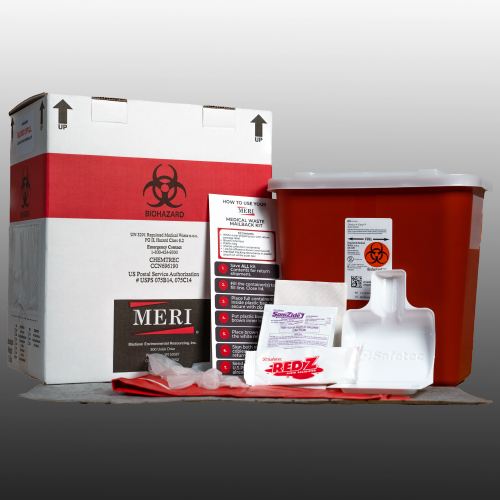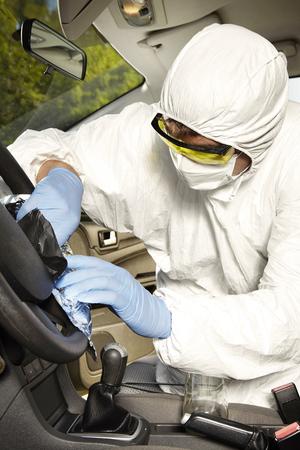Biohazard Removal: Safe Handling and Disposal of Hazardous Products
Biohazard Removal: Safe Handling and Disposal of Hazardous Products
Blog Article
Expert Biohazard Cleaning for Criminal Offense Scenes, Trauma Incidents, and Infected Areas
In the world of specialist biohazard cleaning, precise interest to detail and adherence to safety methods are extremely important. As we dig into the intricacies of biohazard cleaning for these delicate environments, a deeper understanding of the obstacles and essential treatments entailed will certainly emerge, shedding light on the essential duty of expert clean-up services in bring back safety and tranquility of mind.

Significance of Biohazard Cleaning
Biohazard cleanup complying with criminal activity scenes and trauma occurrences is crucial for making sure the safety of individuals and the atmosphere. When these cases occur, they commonly leave behind a variety of biohazards such as blood, physical liquids, and various other potentially contagious products. These materials can nurture dangerous microorganisms like microorganisms and infections, posing severe wellness risks otherwise appropriately cleaned and sterilized.
Specialist biohazard cleanup solutions are trained to take care of these hazardous products securely and effectively. They have the necessary equipment, such as personal protective gear and specialized cleaning up representatives, to extensively sanitize the affected areas. By delegating the cleaning to experienced professionals, individuals can avoid exposure to dangerous pathogens and prevent the spread of contagious diseases.
In addition, proper biohazard cleaning is necessary for safeguarding the setting. Incorrect disposal of biohazardous products can pollute soil, water resources, and air, presenting a danger to wild animals and the community. By adhering to strict clean-up procedures, professionals can make sure that biohazards are safely eliminated and dealt with in conformity with regulations, reducing the risk of environmental contamination.
Types of Biohazards Encountered
Various unsafe products typically come across in crime scenes and injury occurrences existing significant health and wellness dangers if not handled properly. Blood and physical fluids are amongst the most common biohazards found in these circumstances.
An additional sort of biohazard usually come across is sharp things like needles, busted glass, and other things that can trigger injuries and transmit infections. Chemical risks are additionally an issue, as criminal activity scenes might contain compounds like tear gas, pepper spray, or medicine manufacturing materials that need customized handling and disposal procedures to stop additional damage.
Furthermore, mold and microorganisms development can occur precede where decomposition or prolonged exposure to dampness has actually occurred. These bacteria can launch contaminants and irritants into the air, presenting respiratory system risks to those revealed. Generally, biohazard cleaning specialists have to be fully equipped and experienced to efficiently deal with these different kinds of unsafe products to make sure the safety of themselves and others.
Devices and Protective Equipment
When attending to the important job of managing biohazards come across in criminal offense scenes and injury incidents, the use of proper devices and safety equipment is paramount to making sure the safety and security of individuals included in the cleaning process. Specialized cleansing tools like biohazard sharps, bags, and disinfectants containers are required for the secure collection and disposal of infected materials. Guaranteeing that all equipment is effectively preserved, on a regular basis evaluated, and used according to safety standards is important in minimizing the risk of exposure to biohazards throughout cleaning procedures.
Cleaning Refine and Strategies
Reliable and complete cleaning of biohazardous materials from crime scenes and trauma events requires meticulous focus to information and adherence to rigorous security procedures. The cleaning process normally includes several key steps. Originally, the area must best site be examined to figure out the extent of contamination and the ideal cleaning techniques required. Next off, all biohazardous materials, including blood, physical liquids, and cells deposits, need to be meticulously eliminated and dealt with according to local policies.
Following the removal of biohazardous materials, the damaged location goes through a thorough cleaning and sanitation process. This action involves using specialized cleaning agents and tools to ensure that all traces of contamination are eliminated. After cleaning, the area is subjected to extensive screening to confirm that it is risk-free and free of any staying biohazards.

Decontamination and Disposal Procedures
To make sure comprehensive decontamination and proper disposal of biohazardous materials, complying with the careful clean-up process, i was reading this particular procedures must be carefully followed with strict adherence to safety and security methods. Purification includes the removal or neutralization of impurities to decrease the danger of exposure and spread of unsafe materials. This procedure generally consists of cleansing, sanitizing, and sanitizing the affected location using customized equipment and EPA-approved chemicals.
Once decontamination is completed, appropriate disposal of biohazardous products is crucial to stop further contamination or damage. Biohazardous waste, such as physical fluids or blood-soaked materials, must be meticulously accumulated, packaged, and labeled according to governing standards. ATP testing. These materials are then delivered to accredited facilities for disposal via proper networks, making certain compliance with local, state, and government policies

Conclusion
Finally, specialist biohazard clean-up is crucial for guaranteeing the efficient and safe elimination of unsafe products from criminal activity scenes, injury events, and contaminated rooms. By making use of specific tools, safety equipment, and following appropriate cleanup processes and techniques, biohazard clean-up groups can properly sanitize and get rid of of biohazards, lessening the danger of exposure and harm to people and the atmosphere.
As we dig into the complexities of biohazard cleanup for these sensitive settings, a much deeper understanding of the obstacles and critical procedures involved will arise, dropping light on the crucial duty of specialist cleanup solutions in recovering safety and security and peace of mind.
Professional biohazard cleanup services are trained to manage these dangerous materials securely and effectively. By following stringent cleaning procedures, professionals can ensure that biohazards are securely gotten rid of and disposed of in conformity with regulations, minimizing the danger of ecological contamination.
On the whole, biohazard cleaning specialists should be fully equipped and experienced to properly deal with these numerous types of harmful materials to make sure the safety of themselves and others.
When attending to the vital article job of handling biohazards experienced in criminal offense scenes and injury occurrences, the utilization of proper equipment and protective gear is vital to making certain the safety of individuals involved in the cleanup process.
Report this page